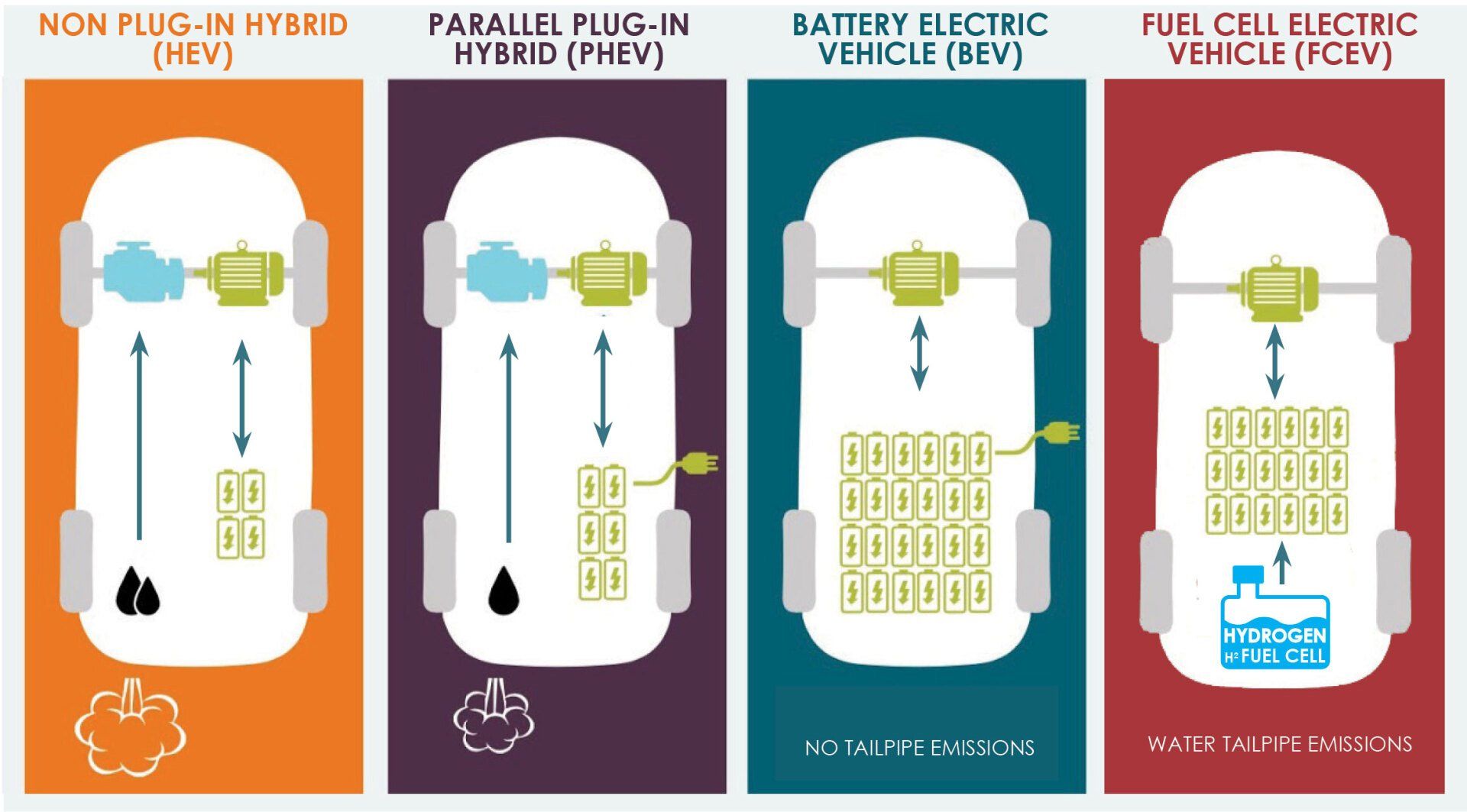EV,PHEV, HEV –what’s the difference?
There has been a lot of talk lately about clean cars, so we thought we would give you just a quick overview on the differences between them, and what they offer.
HEV – Non Plug in Hybrid Electric Vehicle
These cars are typically called “hybrids” and they gained popularity and traction with the introduction of the Toyota Prius.
Hybrid electric vehicles combine a conventional internal combustion engine with an electric propulsion system. The internal combustion engine does most of the work, while the electric motor assists the engine, with its main purpose being to increase the fuel economy.
Hybrids don’t have the ability to be plugged in and recharged from the grid. Instead they use their internal combustion engines and specialised braking systems to recharge the vehicles batteries. Most hybrids cannot propel the car without also having the combustion engine running while the car is moving.
However, Toyota believes that hybrids remain the best alternative today to start the CO2 reduction journey with new hybrids nearing price parity with petrol versions. They are also more abundant on the used vehicle market.
Hybrids have contributed to an average CO2 reduction of 20g/100kms across the hybrid Toyota range. As a result, Toyota is on track to meet its Clean Car CO2 target of 164gm/km before the target date of 2023.
We have hybrid vehicles available in 9 of our new vehicle model ranges, from Yaris, right through to the new Highland Hybrid, with various options and specifications, as well as numerous used hybrid vehicles.
Click here to find out more about our new hybrid vehicles or view our used hybrid vehicles offering here.
PHEV Parallel Plug-in Hybrid
The biggest difference between a regular hybrid vehicle and a plug-in hybrid electric vehicle is that the plug-ins have larger batteries and can be plugged in to charge the batteries.
As they also have larger batteries, they can propel the vehicle without the use of the combustion engine for a period of time. In the event that the battery is not charge from the plug in socket, the vehicle cans still be operated like a conventional hybrid battery vehicle.
These vehicles, such as the Prius Prime are popular with customer who want additional range and drive longer distances on a regular basis, as they can quickly fill with fuel, where no charging station is available.
Currently, Toyota offers the Prius Prime PHEV
BEV Battery Electric Vehicle
Often, just called Electric Vehicles, they are powered entirely on batteries, with full electric drive train.
One of the advantages of electric vehicles is their simplicity – they have few moving parts and require less maintenance, which results in large savings over the lifetime of the vehicle compared with combustion engine vehicles.
As their range is entirely dependent on the charge held in their batteries, it is important to ensure they are charged regularly. In some models this can take up to 10hrs, so when choosing an electric car, it is important to choose a home charging solution that can fully recharge your BEV as quickly as possible, so you can enjoy the vehicle to its fullest.
Toyota Motor Corporation has recently revealed the production design of their new bZ4x full battery electric vehicle which will be available in New Zealand toward the end of 2022. The bz is part of Toyota's Beyond Zero range, which is focused on achieving carbon neutrality. More information will become available closer to the launch date, so watch this space!
FCEV Fuel Cell Electric Vehicles
Fuel Cell Electric Vehicles are powered by hydrogen, and produce zero tail pipe emissions. They use a propulsion system similar to electric vehicles where energy stored as hydrogen is converted to electricity by the fuel cell. They are fueled with pure hydrogen gas stored in a tank on the vehicle and can be fueled in less than four minutes.
FCEV are also equipped with other technology to increase efficiency such as regenerative braking systems that capture energy lost during braking.
Toyota is taking a diversified approach to hydrogen technology investment. It is investing in its own manufacturing plant and joint ventures to speed up the development and production of batteries and hydrogen fuel cells. It fully expects to be selling 30,000 FCEVs (currently 3,000) per year globally in the not too distant future.
Toyota has a range of hydrogen powered vehicles already for sale in selected markets. Sales began in 2018 of the Toyota Sora FCEV bus and Toyota expects to introduce 100 Sora buses within the Tokyo metropolitan area ahead of the Olympic and Paralympic Games in Tokyo 2020.
The medium-sized FCEV Toyota Mirai car has been available in several markets, including Scandinavia, Canada and California, since 2014 and FCEV forklifts are in commercial use in Japan and the USA. The next five years will see the introduction of more FCEV models in medium-sized and large cars, buses, trucks, vans and trains.
You can read more about Toyota's investment in hydrogen technology and plans to release these vehicles in New Zealand here.

